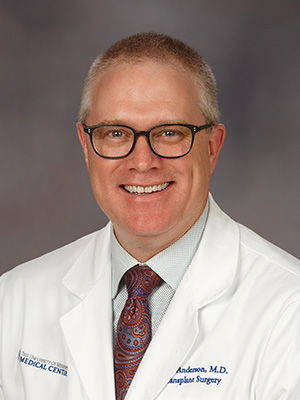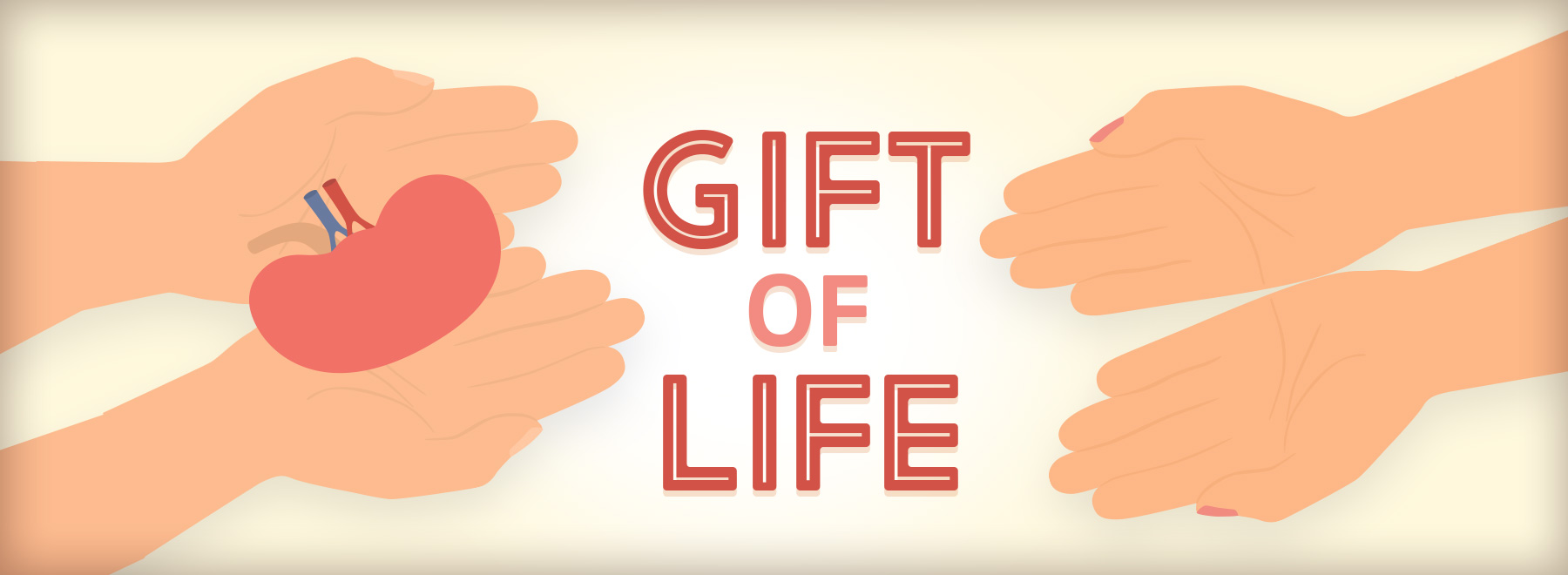UMMC Transplant Explains Living Kidney Donation
When Greenwood farmer Walter Makamson’s kidney failure put him in dire need of a transplant, a sibling who doesn’t share his genetic kidney disease stepped forward to give him the gift of life.
Maggie Gilliland chose to become a “live” donor after undergoing testing to make sure she qualified as a match for her big brother. If not for her decision to give him one of her kidneys in June 2022 at the University of Mississippi Medical Center, Makamson might still be on a waiting list, or might have been forced to begin dialysis as his kidney function continued to plummet.
In a state that ranks first nationally in kidney disease mortality, being a live donor in Mississippi is more important than ever to save lives. Most people on a kidney transplant list wait up to five years for their new organ. Many die while waiting.
“We have other siblings, but he and I were always a team,” said Gilliland, a Greenwood resident and occupational therapist at North Sunflower Medical Center. “I knew at a young age I was supposed to take care of him, and that I was supposed to give him my kidney someday.
“I was 100 percent certain that I would be a match.”
During 2022, UMMC’s abdominal transplant team performed 137 kidney transplants. Of that number, 16 were live donations. The Medical Center is home to the state’s sole organ, tissue, eye and bone marrow transplant program and in 2022 completed its 3,000th transplant when a son gave his mom one of his kidneys.
More than 10,000 Mississippians are living with end-stage renal disease, and of that number, more than 8,000 depend on dialysis to stay alive, latest data from the American Kidney Fund shows. Only about one in seven Mississippians on a kidney transplant waiting list got one in 2020, the Fund says.
A kidney transplant from a living donor will last longer – on average, 15 to 20 years – than from a deceased donor, about 10-15 years on average.

“Any day we do a living donor transplant is a good day,” said Dr. Christopher Anderson, professor and James D. Hardy Chair of the Department of Surgery and an abdominal transplant surgeon. “Living donation is the fastest and best way to expand transplant to those in need.
“We need more people educated on the safety of living donation and the outcomes of living donation.”
The United Network for Organ Sharing, a nonprofit agency that works with the federal government, reports that of the 106,000 people nationally on a transplant waiting list, 87 percent, or 92,000, need a kidney. In 2021, Donate Life America says, about 6,000 people died while on a transplant waiting list.
The good news, says Donate Life America, is that the United States reached a historic milestone in 2022, achieving its one millionth transplant. About 21,300 people donated one or more organs in this country in 2022.
Donation of a living kidney can take two paths: a directed donation when a living donor gives a kidney to a person they’ve chosen, or a non-directed donation when a living donor gives a kidney to a stranger. Another variation is a kidney paired donation, when a donor and a recipient pair who aren’t a good match swap with another donor-recipient pair to get a good match.
And, recipients can receive a kidney through a donor-recipient “chain” made possible by the National Kidney Registry. In short: If someone donates a kidney in your name through the NKR, you receive a voucher to receive a matching kidney from a different donor. Recipients are transplanted within weeks or months. UMMC’s transplant team in February 2021 gave Louisiana resident Hugh Smith a kidney through a National Kidney Registry swap.
“It requires a moment of vulnerability on the patient’s part to make the ask for a kidney,” said Dr. Felicitas Koller, UMMC associate professor of transplant surgery. “They have to say, ‘I’m sick. This is something I need.’ And the person who receives the ask needs to reflect and say, ‘Is this something I want to do?’”
If you’re interested in being a live donor at UMMC, the process could take a few months or more. Here are some first steps:
- You must be at least 18 and capable of making your own informed decisions about your health. Generally, potential donors are subject to weight restriction, must not have substance abuse problems, diabetes, cancer, uncontrolled high blood pressure, or kidney problems.
Donors are not eligible if there is suspicion that they are being coerced or if there has been illegal financial exchange between the donor and the recipient.
“We work up a potential living donor when the recipient (the person needing a kidney transplant) becomes listed on the national waiting list,” said University Transplant administrator for transplant services Dean Henderson. “For the recipient to be listed, they have to go through a very thorough evaluation process at our transplant center and be approved to be healthy enough to get a kidney transplant.
- Donors undergo testing to see if they’re a match for the person who would receive your kidney. The evaluation likely will include blood and urine tests, a colonoscopy for those over 50, cancer screenings, X-rays, an electrocardiogram to check for heart disease, an antibody test; a psychological exam to make sure you’re mentally and emotionally ready to donate; and for women, a gynecological exam.
“We do require that all age-appropriate cancer screenings are up to date prior to beginning your medical testing,” Henderson said. “Typically, people schedule these screenings through their primary care doctor. If you do not have a primary care doctor, we are happy to schedule these appointments at one of our UMMC locations.
“Some recipients have more than one person who wants to donate,” Henderson said. “We do medical testing on one donor at a time. We decide which donor to work up based on the potential donor suitability for donation and the completeness of their pre-evaluation screening.”
It’s not uncommon to screen between five and 10 people in search of someone healthy enough to donate a kidney, Koller said.
“And even if you don’t qualify to give a kidney, you can be an advocate to support someone involving a donation,” she said. “It’s not just giving a piece of your body. We can all be living donors with our time and advocacy.”
- When UMMC completes an evaluation, the donor’s information is presented to the living donor selection committee. The committee decides if the donor is suitable to donate a kidney at the Medical Center.
The removal of a donor’s kidney in most surgeries is done laparoscopically, using very small cuts on the donor’s stomach that are just big enough for the kidney to fit through. It takes two to three hours, and the donor generally spends up to three days in the hospital. In Gilliland’s case, she went home the next day and was back to her normal activities in about a month.
Major costs of donation are covered by the kidney recipient’s insurance, including the pre-transplant evaluation.
- The Medical Center encourages those interested in becoming a live kidney donor to attend a 7 p.m. educational class held the second Wednesday of the month in the B.B. Richardson Conference Room, located in the main administrative offices right inside the main entrance to University Hospital. For information, call University Transplant at (601) 984-5065, select option 1, then option 4. Or, send an email to livingdonor@umc.edu. Those interested will be asked to fill out a short screening form.
The above article appears in CONSULT, UMMC’s monthly e-newsletter sharing news about cutting-edge clinical and health science education advances and innovative biomedical research at the Medical Center and giving you tips and suggestions on how you and the people you love can live a healthier life. Click here and enter your email address to receive CONSULT free of charge. You may cancel at any time.



